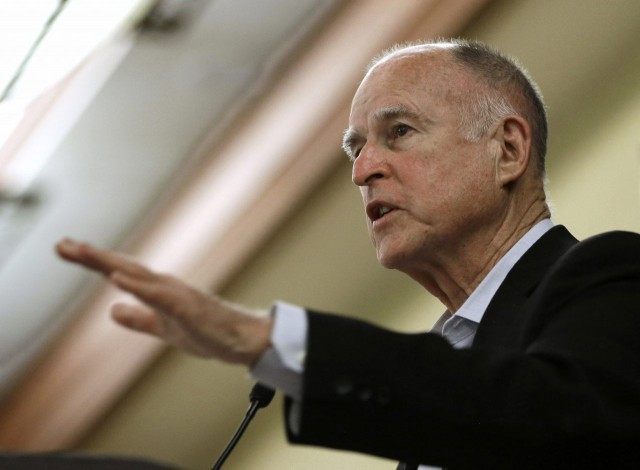With 42 percent of U.S. workers making less than $15 an hour, the union-led “living wage initiative” that just qualified for the California ballot in November is generating opposition from business — and Governor Jerry Brown.
California Secretary of State Alex Padilla’s noted that the Service Employees International Union (SEIU) and others just qualified their “Lift Up California” initiative by gathering about 35,000 more valid California signatures than the 365,880 required under law.
According to the ballot summary approved by Padilla’s office:
“Under existing law, California’s minimum wage will increase from $9.00 per hour to $10.00 per hour on January 1, 2016. This measure increases the minimum wage to $11.00 per hour, effective January 1, 2017, and by $1.00 each of the next four years, to $15.00 per hour on January 1, 2021. Thereafter, adjusts the minimum wage annually based on the rate of inflation for the previous year, using the California Consumer Price Index for Urban Wage Earners and Clerical Workers.”
Picking the number of $15 an hour for the initiative was a strategic decision by the unions, based on the demographics of their national organizational targeting, to create an army of local support. Nationally, about 42 percent of U.S. workers and 54.7 percent of women make less than $15 an hour. More than 60 percent of Latino workers and more than half of African-American workers make less than $15 an hour. Furthermore, about 46.4 percent of workers making less than $15 per hour are ages 35 and older.
With private sector union membership having plummeted from almost 40 percent of the workforce in the 1960s to a new low of 6.6 percent in 2015, unions see what they call the “Fight for 15” as the cornerstone of their organizing efforts.
Although there is only a limited amount of research on how a $15 an hour California minimum wage would impact, a University of California Berkley study for the City of Los Angeles found that approximately 41 percent of the local workforce would earn an average of $4,800 more per worker per year on a $15 minimum wage. That does not include the additional $367 Social Security and Medicare cost that would be paid by employers.
Big service businesses, including chain restaurants, hotels and retailers, are cranking up to finance the political fight against the union-backed initiative. But with the $15 wage being an existential threat to small businesses that do not have the profits or expertise to automate away higher labor costs, there will also be a vast and extremely well-funded army of local entrepreneurs mobilizing to fight “Lift Up California.”
It appears that Governor Brown may become a powerful ally of business in fighting the initiative. He commented in January that the state’s new nation-leading $10-per-hour minimum wage “is enough for now,” because the increase will cost the state budget an extra 250 million a year.
Brown pointed to a California Department of Finance economic analysis that warned that a $15 an hour minimum wage would be much more devastating to the annual state budget, by adding an additional $4 billion in cost by 2021.
But Brown’s biggest concern is that the $15 minimum wage will actually hurt the poor people it is supposedly intended to help. “Raise the minimum wage too much and you put a lot of poor people out of work,” Brown told reporters, according to the Sacramento Business Journal. “There won’t be a lot of jobs. It’s a matter of balance.”

COMMENTS
Please let us know if you're having issues with commenting.